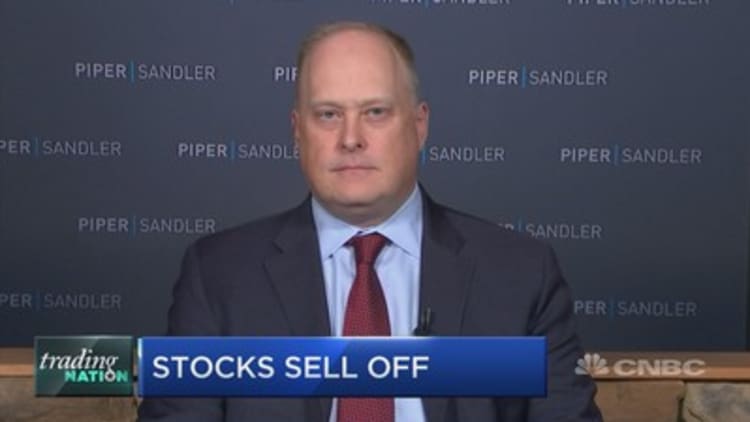
The stock market sell-off has stretched into another week.
The S&P 500 fell 12% on Monday, dragging the index nearly 30% from its record peak set less than a month ago.
Piper Sandler chief market technician Craig Johnson said the charts indicate the sell-off is more measured than the chaotic day-to-day moves would suggest.
"The charts absolutely are giving us guidance at this point in time. They've been actually trading technically perfect," Johnson said Monday on CNBC's "Trading Nation."
Johnson said that technical analysis implies a drop as low as the 2,325 to 2,350 range. The lower end of that range takes the S&P 500 3% lower.
He added that another corner of the market could be signaling an even bigger decline before the S&P 500 bottoms — the small caps, as indexed in the Russell 2000.
"If I look at the Russell 2000 as kind of the foot soldiers in the market, … I've got about 75% of those stocks in the Russell 2000 closing below the December 2018 lows and only about 50% in the S&P 500," said Johnson. "Foot soldiers are the ones that sell off first. The generals are the ones that kind of get hit last, and those generals still … need about another 10% to 15% washouts before you get to those levels."
A 15% drop would take the S&P 500 down to around 2,020, a level not seen since mid-2016.
"It takes anywhere from two to seven weeks for those washout levels before you actually can step up and safely buy into the market. And so I think it's a little bit more time," he said.
Joule Financial Quint Tatro agreed that the worst of the sell-off may be yet to come.
"The fear is strong, but it looks like we could have even further panic," Tatro said during the same segment.
He added that trading this market depends on individual investors' comfort zone and time horizon.
"If someone is young with a long period of investment time horizon, we really advise doing nothing different — in fact, making sure they continue with their contributions and their retirement accounts," Tatro said. "Those folks that are closer to retirement with a shorter time frame, this is where it gets very, very tricky. And I think, going through their allocation, making sure that they are appropriately allocated with enough fixed income to give them a few years if this takes a very long time to come back."





